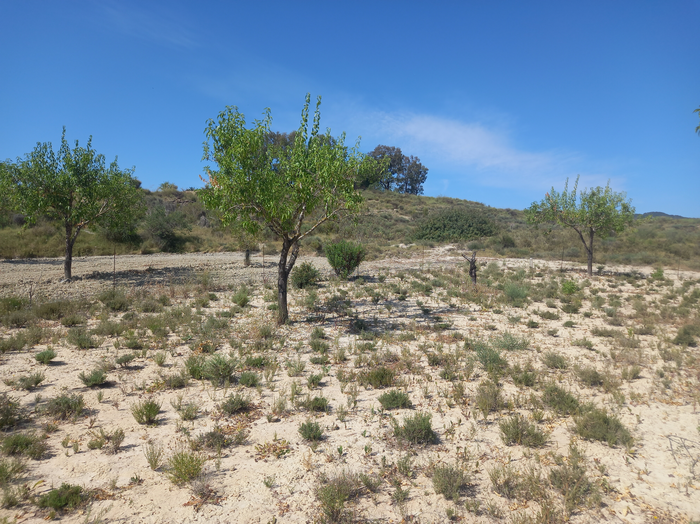Reviewed by Mila PereraSep 15 2022
According to the most recent Diverfarming project study, planting perennial crops in the alleyways of Mediterranean dryland almond orchards boosts soil carbon sequestration and lowers greenhouse gas emissions.
 The case study where Diverfarming project experiments crop diversification in almond tree. Image Credit: Diverfarming
The case study where Diverfarming project experiments crop diversification in almond tree. Image Credit: Diverfarming
Agriculture has significant potential to be a carbon sink, but farming’s expansion and high input consumption have become a source of greenhouse gas emissions. Agricultural soils offer a rare potential for carbon absorption and offsetting emissions if adequately managed.
The Diverfarming project has concentrated on the introduction of two perennial crops, thyme and caper, among the alleys of a dryland almond orchard in Murcia, with minimum tillage, in the quest for that management that helps to fight climate change and retains, and even increases, the productivity of the land.
The short-term impact of this intercropping compared to monocropping with tillage, relating soil CO2 emissions and its organic carbon content, has been assessed by a team of researchers from the CEBAS–CSIC and the Universidad Politécnica de Cartagena (UPCT).
Over two years, researchers monitored the emissions of carbon dioxide and nitrogen oxide.
Compared to monocropping, the carbon dioxide emissions were lower in the intercropping systems when no-tillage was used. It was revealed that the peaks in the emissions took place after tillage on hot days, making it recommended to evade tilling on such days.
Because of the high yield of both the thyme and the almonds produced by the system that included thyme’s introduction, there was a larger rise in the overall amount of soil organic carbon. Two more years would be needed to verify the total soil organic carbon level in the case of capers.
The ability of these crops to be planted in rows between the primary crop and later commercialized makes the rise in the economic productivity of the land another crucial consideration when selecting this kind of intercropping system.
In fact, without having any negative consequences on the production of almonds, up to 7 litres of essential oil was collected from thyme per acre.
To improve soil organic matter in the near term, prevent soil loss, and lower greenhouse gas emissions, it is advantageous to combine crops adapted to the soil and climate conditions with the primary crop and plant them in rows in the alleyways.
These methods would follow the European Green Deal’s and the continent’s climate legislation’s goals of achieving climate neutrality in agricultural activities by 2050.
Under Agreement 728003, the European Commission’s Horizon 2020 Program provided funding for the Diverfarming project under the challenge of 'Food Security, Sustainable Agriculture and Forestry, Marine, Maritime and Inland Water Research and the Bioeconomy.'
Universities of Cartagena and Córdoba (Spain), Tuscia (Italy), Exeter and Portsmouth (United Kingdom), Wageningen (Netherlands), Trier (Germany), Pecs (Hungary), and ETH Zurich (Switzerland) are among those participating.
Research centers Consiglio per la ricerca in agricoltura e l'analisi dell'economia agraria (Italy), the Consejo Superior de Investigaciones Científicas (Spain) and the Natural Resources Institute LUKE (Finland), the agrarian organisation ASAJA also took part in the project.
Companies like Arento, LogísticaDFM and Industrias David (Spain), Casalasco and Barilla (Italy), Weingut Dr. Frey (Germany), Nieuw Bromo Van Tilburg and Ekoboerdeij de Lingehof (Netherlands), Nedel-Market KFT and Gere (Hungary) and Paavolan Kotijuustola and Polven Juustola (Finland) participated in the research.
Journal Reference
Sánchez-Navarro, V., et al. (2022) Perennial alley cropping contributes to decrease soil CO2 and N2O emissions and increase soil carbon sequestration in a Mediterranean almond orchard. Science of The Total Environment. doi.org/10.1016/j.scitotenv.2022.157225.